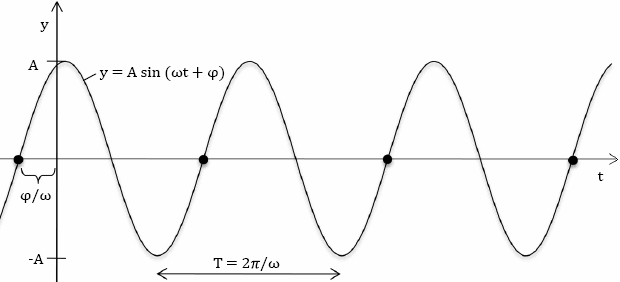"If you want to understand universe,
think in terms of Energy, Frequency
and Vibration"
- Nikola Tesla(10th Jul. 1856 - 7th Jan. 1943)
So, now writing about each key points:
1. Energy: Unlike velocity, acceleration, force, and momentum, the kinetic energy of an object is completely described by magnitude alone. Like work and potential energy, the standard metric unit of measurement for kinetic energy is the Joule. As might be implied by the above equation, 1 Joule is equivalent to 1 kg*(m/s)^2.
2. Frequency: f = c / λ = wave speed c (m/s) / wavelength λ (m). The formula for time is: T (period) = 1 / f (frequency). λ = c / f = wave speed c (m/s) / frequency f (Hz). The unit hertz (Hz) was once called cps = cycles per second.
3. Vibration: Vibration is a mechanical phenomenon whereby oscillations occur about an equilibrium point. The word comes from Latin vibrationem ("shaking, brandishing") The oscillations may be periodic, such as the motion of a pendulum—or random, such as the movement of a tire on a gravel road.
Vibration can be desirable: for example, the motion of a tuning fork, the reed in a woodwind instrument or harmonica, a mobile phone, or the cone of a loudspeaker.
In many cases, however, vibration is undesirable, wasting energy and creating unwanted sound. For example, the vibrational motions of engines, electric motors, or any mechanical device in operation are typically unwanted. Such vibrations could be caused by imbalances in the rotating parts, uneven friction, or the meshing of gear teeth. Careful designs usually minimize unwanted vibrations.
The studies of sound and vibration are closely related. Sound, or pressure waves, are generated by vibrating structures (e.g. vocal cords); these pressure waves can also induce the vibration of structures (e.g. ear drum). Hence, attempts to reduce noise are often related to issues of vibration.
Free Vibrations. Basics k = F δ. (1) ωn = √ k m. (2) f = ωn. 2π. (3). T = 1 f. = 2π ωn. = 2π. √m k. (4). Equation of motion mx + kx = 0.
think in terms of Energy, Frequency
and Vibration"
- Nikola Tesla(10th Jul. 1856 - 7th Jan. 1943)
So, now writing about each key points:
1. Energy: Unlike velocity, acceleration, force, and momentum, the kinetic energy of an object is completely described by magnitude alone. Like work and potential energy, the standard metric unit of measurement for kinetic energy is the Joule. As might be implied by the above equation, 1 Joule is equivalent to 1 kg*(m/s)^2.
2. Frequency: f = c / λ = wave speed c (m/s) / wavelength λ (m). The formula for time is: T (period) = 1 / f (frequency). λ = c / f = wave speed c (m/s) / frequency f (Hz). The unit hertz (Hz) was once called cps = cycles per second.
3. Vibration: Vibration is a mechanical phenomenon whereby oscillations occur about an equilibrium point. The word comes from Latin vibrationem ("shaking, brandishing") The oscillations may be periodic, such as the motion of a pendulum—or random, such as the movement of a tire on a gravel road.
Vibration can be desirable: for example, the motion of a tuning fork, the reed in a woodwind instrument or harmonica, a mobile phone, or the cone of a loudspeaker.
In many cases, however, vibration is undesirable, wasting energy and creating unwanted sound. For example, the vibrational motions of engines, electric motors, or any mechanical device in operation are typically unwanted. Such vibrations could be caused by imbalances in the rotating parts, uneven friction, or the meshing of gear teeth. Careful designs usually minimize unwanted vibrations.
The studies of sound and vibration are closely related. Sound, or pressure waves, are generated by vibrating structures (e.g. vocal cords); these pressure waves can also induce the vibration of structures (e.g. ear drum). Hence, attempts to reduce noise are often related to issues of vibration.
Free Vibrations. Basics k = F δ. (1) ωn = √ k m. (2) f = ωn. 2π. (3). T = 1 f. = 2π ωn. = 2π. √m k. (4). Equation of motion mx + kx = 0.

No comments:
Post a Comment